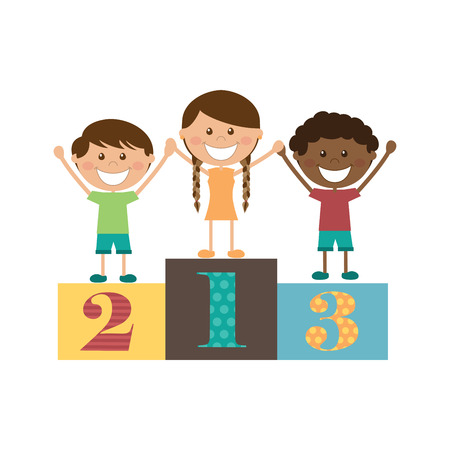Understanding Developmental Delays
When families first hear that their child may have a developmental delay, it can feel overwhelming. Understanding what developmental delays are is the first step in helping your child get the support they need. In the United States, there are laws and resources to protect and help children with developmental delays, but knowing the basics is essential for every family.
What Are Developmental Delays?
Developmental delays happen when a child does not reach certain milestones at the expected times. These milestones include walking, talking, learning, and socializing. Every child grows at their own pace, but if your child is significantly behind other kids their age in more than one area, it might be a sign of a developmental delay.
Types of Developmental Delays
| Type | Description | Examples |
|---|---|---|
| Cognitive | Trouble with thinking, learning, and problem-solving | Difficulty understanding concepts, remembering things |
| Speech and Language | Problems with speaking or understanding speech | Not speaking by age 2, limited vocabulary |
| Motor (Physical) | Delays in movement and coordination | Trouble sitting up, crawling, walking, using hands |
| Social and Emotional | Difficulties interacting with others or managing emotions | Not making eye contact, trouble playing with peers |
| Adaptive (Self-Help) | Delays in self-care skills | Trouble feeding or dressing themselves |
Early Warning Signs to Watch For
- No big smiles or other warm expressions by six months old
- No babbling by twelve months old
- No words by sixteen months old
- Trouble making eye contact or responding to their name by one year old
- Trouble sitting up or walking by expected ages
- Losing skills they once had (like stopping talking)
Common Conditions That Cause Developmental Delays
- Autism Spectrum Disorder (ASD): Affects communication and behavior; children may have trouble with social interactions and repetitive behaviors.
- Cerebral Palsy: Impacts muscle tone and movement; may cause delays in physical development.
- Down Syndrome: A genetic condition that causes intellectual disability and developmental delays.
- Global Developmental Delay: When a child shows significant delays in two or more areas of development.
- Speech or Language Disorders: Trouble communicating effectively due to problems with speech or understanding language.
How This Information Helps Families
If you notice these signs or think your child is developing differently from other kids their age, it’s important to talk to your pediatrician. The earlier you get help, the better the outcomes for your child. Knowing about developmental delays helps families ask the right questions and seek out services that can make a real difference for their children’s future.
Federal Laws Protecting Children with Developmental Delays
Understanding Your Child’s Legal Rights
In the United States, several important federal laws are in place to protect children with developmental delays and ensure they receive the support they need. Knowing these laws can help families become strong advocates for their children. The three main laws you should know about are the Individuals with Disabilities Education Act (IDEA), Section 504 of the Rehabilitation Act, and the Americans with Disabilities Act (ADA).
Key Federal Laws Explained
| Law Name | What It Does | Who Is Covered | Main Benefits |
|---|---|---|---|
| Individuals with Disabilities Education Act (IDEA) | Ensures special education and related services are provided in public schools. | Children ages 3-21 with qualifying disabilities, including developmental delays. | Individualized Education Programs (IEPs), free appropriate public education (FAPE), early intervention services. |
| Section 504 of the Rehabilitation Act | Protects against discrimination based on disability in programs receiving federal funds, like public schools. | Students with any physical or mental impairment that limits a major life activity. | 504 Plans for accommodations in school, access to extracurricular activities. |
| Americans with Disabilities Act (ADA) | Bans discrimination based on disability in all public spaces, including schools, daycare centers, and playgrounds. | All individuals with disabilities, including children. | Equal access to facilities, programs, and services outside of school too. |
The Individuals with Disabilities Education Act (IDEA)
IDEA is a cornerstone law that guarantees special education services to eligible children. Under IDEA, schools must identify students who have developmental delays and create an Individualized Education Program (IEP) tailored to each child’s needs. This means your child will get support that fits their unique learning style and abilities at no cost to your family.
Section 504 of the Rehabilitation Act
If your child does not qualify for an IEP under IDEA, they may still be protected by Section 504. This law requires schools to make reasonable changes—called accommodations—so students with disabilities can learn alongside their peers. Examples include extra time on tests or help taking notes in class.
The Americans with Disabilities Act (ADA)
The ADA goes beyond schools to cover all public areas and community activities. If your child has a developmental delay, this law makes sure they can access playgrounds, after-school programs, and other public places without being treated unfairly. The ADA helps break down barriers so every child can participate fully in daily life.

3. Accessing Early Intervention and Special Education Services
Understanding Your Child’s Rights
If your child has developmental delays, you have the right to access services and support through your local school district. In the United States, federal laws like the Individuals with Disabilities Education Act (IDEA) and Section 504 of the Rehabilitation Act ensure that children with disabilities get the help they need at no cost to families.
Step-by-Step Guide to Accessing Services
Step 1: Identifying Concerns
If you suspect your child is not meeting developmental milestones, speak with your pediatrician or reach out directly to your local school district’s special education department. You do not need a doctor’s referral to start this process.
Step 2: Requesting an Evaluation
You can formally request an evaluation in writing from your school district. This evaluation will determine if your child qualifies for early intervention (for children under 3) or special education services (ages 3-21).
Sample Written Request
“I am requesting a special education evaluation for my child, [Child’s Name], due to concerns about developmental delays.”
Step 3: The Evaluation Process
The school district must respond within a set time frame (often 60 days). Evaluations typically include educational, psychological, speech, and occupational assessments as needed. As a parent or guardian, you have the right to participate and receive all reports in plain language.
Step 4: Eligibility Meeting
A team—including you—will review the results. If your child is found eligible, the next steps are determined by their age:
| Age Group | Services Offered |
|---|---|
| Birth to Age 3 | Early Intervention (Individualized Family Service Plan – IFSP) |
| Ages 3-21 | Special Education (Individualized Education Program – IEP) or Section 504 Plan |
Step 5: Developing the Plan
If eligible, your team creates an IEP or Section 504 Plan. Both documents outline goals and the support your child will receive, but there are some key differences:
| IEP (Individuals with Disabilities Education Act) | Section 504 Plan (Rehabilitation Act) |
|---|---|
| For students needing specialized instruction Covers ages 3-21 Includes specific learning goals and related services (e.g., speech therapy) |
For students needing accommodations only No age restriction Makes sure students have equal access (e.g., extra time on tests) |
Step 6: Annual Review and Updates
Your child’s needs may change over time. The IEP or Section 504 Plan must be reviewed annually, but you can request a meeting at any time if you feel changes are needed.
Your Role as a Parent or Guardian
- You are a key member of your child’s education team.
- You have the right to ask questions and request changes at any stage.
- You can bring someone with you for support during meetings.
- If you disagree with decisions, you can request mediation or a due process hearing.
This step-by-step approach ensures that children with developmental delays receive individualized supports and services for success in school and beyond.
4. Advocating for Your Child
Partnering with Schools and Service Providers
Working closely with your childs school and service providers is key to ensuring they get the support they need. Building positive relationships helps create a team that is focused on your childs growth and success. Here are some practical strategies:
- Communicate Regularly: Stay in touch with teachers, therapists, and other professionals through emails, phone calls, or meetings.
- Stay Organized: Keep all documents such as evaluations, reports, and communication records in one place.
- Be Involved: Attend school events, parent-teacher conferences, and IEP (Individualized Education Program) meetings.
- Ask Questions: Don’t hesitate to ask for clarification or more information about your child’s services.
- Share Insights: You know your child best—share what works at home and any concerns you have.
Understanding Your Rights at Meetings
As a parent or guardian, you have specific rights when it comes to decisions about your child’s education. Knowing these rights can help you feel more confident during meetings such as IEP or 504 Plan meetings. Below is a simple overview:
| Your Right | What It Means |
|---|---|
| Participation | You have the right to attend and participate in all meetings about your child’s education plan. |
| Information | You must be given clear information about your childs progress and the services they receive. |
| Consent | Your permission is needed before certain evaluations or changes to services are made. |
| Disagreement Process | If you disagree with decisions, you can request mediation, file a complaint, or ask for a due process hearing. |
| Language Support | You have the right to an interpreter if English is not your first language. |
What to Do If You Disagree with Decisions
If you do not agree with decisions made by the school regarding your child’s education, there are steps you can take. Here’s what you can do:
- Request Another Meeting: Ask for another meeting to discuss your concerns and try to find common ground.
- Mediation: Request mediation—a neutral third party helps you and the school reach an agreement.
- File a Complaint: You can submit a formal complaint to your state’s Department of Education if you believe your rights have been violated.
- Due Process Hearing: This is a legal process where an impartial judge reviews the case and makes a decision.
- Seek Help from Advocacy Groups: Organizations like the Parent Training and Information Center (PTI) or local advocacy groups can provide guidance and support.
Helpful Resources for Families
| Resource Name | Description | Website |
|---|---|---|
| PACER Center PTI | A national center offering training and information for parents of children with disabilities. | pacer.org |
| The Center for Parent Information & Resources (CPIR) | Covers special education laws, rights, and advocacy tips for families. | parentcenterhub.org |
| Your State Department of Education – Special Education Office | The main contact for state-level questions about special education rights and complaints. | ed.gov State Contacts List |
5. Resources and Support for Families
Finding the right support can make a huge difference when navigating the world of developmental delays. In the United States, there are many organizations, legal aid resources, parent advocacy groups, and community supports designed to help families from all backgrounds. Here’s a curated list to help you get started:
National Organizations
| Organization | Description | Website |
|---|---|---|
| Wrightslaw | Provides accurate, up-to-date information about special education law and advocacy for children with disabilities. | wrightslaw.com |
| The Arc of the United States | Advocates for individuals with intellectual and developmental disabilities and offers family support services. | thearc.org |
| Autism Speaks | Offers resources, toolkits, and support for families affected by autism spectrum disorder. | autismspeaks.org |
| Family Voices | A national network supporting families of children with special health care needs through peer support and policy work. | familyvoices.org |
| PACER Center | Empowers parents through workshops, individual assistance, and materials on disability rights and advocacy. | pacer.org |
Legal Aid Resources
- Disability Rights Education & Defense Fund (DREDF): Offers legal support and information regarding disability rights across the U.S. dredf.org
- Legal Services Corporation (LSC): Helps connect low-income families to local legal aid providers. lsc.gov
- Your State’s Protection & Advocacy Agency: Each state has an agency that assists with legal issues related to disabilities. Find yours at ndrn.org/about/ndrn-member-agencies/
Parent Advocacy Groups
- Parent Training and Information Centers (PTIs): Every state has a PTI that educates parents about their child’s rights in education and how to advocate effectively. Find your center here.
- National Parent Helpline: A free resource offering emotional support from trained advocates at 1-855-4A PARENT (1-855-427-2736).
- Understood: An online community providing resources and forums for parents of kids with learning and thinking differences. understood.org
Culturally Competent Community Supports
If your family speaks a language other than English or comes from a specific cultural background, there are organizations ready to help:
| Support Service | Description & Focus Area | Contact/Website |
|---|---|---|
| NAMI Multicultural Action Center | Mental health advocacy for culturally diverse communities; offers multilingual resources. | nami.org/Your-Journey/Identity-and-Cultural-Dimensions |
| The National Center for Family Professional Partnerships (NCFPP) | Culturally responsive peer support for families with children who have special health care needs. | familyvoices.org/ncfpp/ |
| LULAC (League of United Latin American Citizens) | Bilingual advocacy and resources for Latino families raising children with disabilities. | lulac.org/programs/youth/disabilities/ |
| African American Developmental Disabilities Network (AADDN) | Culturally relevant education, advocacy, and events for African American families. | aaddn.com |
| Southeast Asia Resource Action Center (SEARAC) | Culturally tailored support for Southeast Asian American families dealing with disabilities. | searac.org/ |
How to Start Connecting with These Resources?
You don’t have to face this journey alone. Reach out to these organizations through their websites or phone numbers. Most offer free consultations or referrals. Local school districts also often have lists of recommended community supports. Ask about culturally competent services if you need information in your language or want someone familiar with your culture.
Your Voice Matters!
No matter where you are in the process, connecting with other parents and professionals can empower you to advocate more effectively for your child’s needs. Remember—help is available, and there are people ready to walk this path with you every step of the way.


